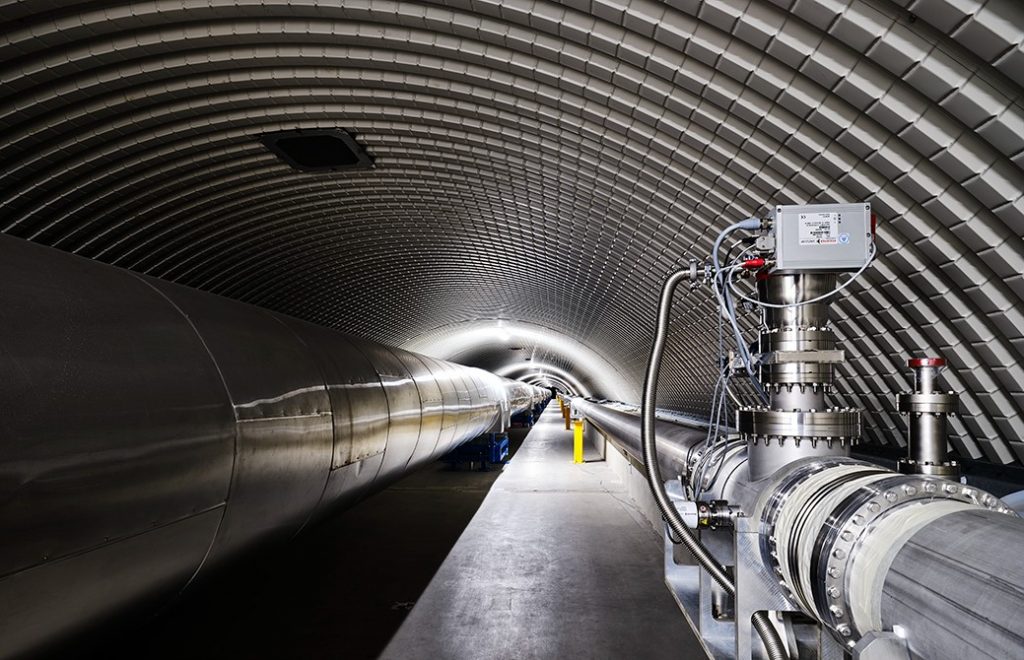Future

The global network of gravitational-wave interferometers – the two Advanced LIGOs, Advanced Virgo and KAGRA – alternates observation periods with periods dedicated to upgrading and improving the detectors.
While the existing interferometers have been, since their very construction, regularly upgraded, progressing from initial detectors to advanced ones, the improvements in their sensitivity cannot continue forever due to the intrinsic limitations of their infrastructures. Therefore, the design process for future gravitational-wave interferometers has already started.
Two detectors, with arms up to tens of kilometers-long, one in Europe, the Einstein Telescope (ET), and one in the United States, Cosmic Explorer (CE), have been planned to be constructed in the near future. The selection process for their sites is currently ongoing. Due to their dimensions and innovative characteristics, the technological challenges of these detectors are unprecedented. In particular, the plan for the Einstein Telescope is to be underground in order to reduce environmental noises; but this makes the infrastructure more complex. Overcoming these challenges will allow us to realize the impressive scientific potential of the next-generation detectors.
Gravitational waves at frequencies from about one thousandth of a Hertz to one Hertz (produced, for example, by the merger of extremely massive black holes, such as those found at the center of many galaxies), can only be explored through the use of space detectors. For this reason, the Laser Interferometer Space Antenna (LISA) was conceived. This detector will be composed of three masses in free-fall, orbiting around the Sun in a triangular formation, and about 2.5 millions of kilometers away from one another. The LISA mission is currently led by the European Space Agency (ESA), with contributions from NASA and many ESA member states.